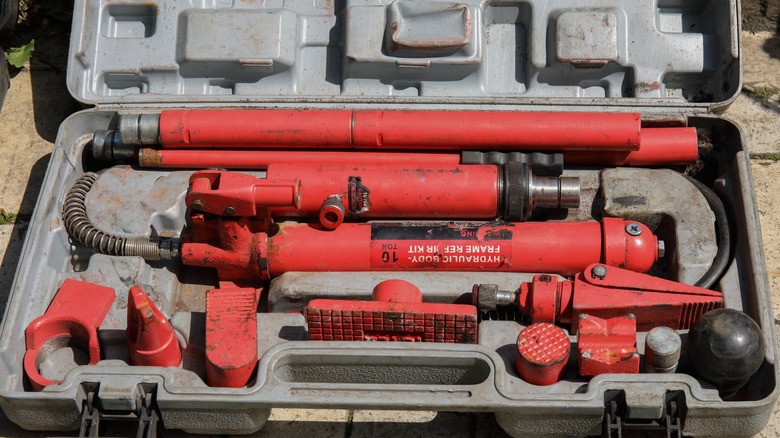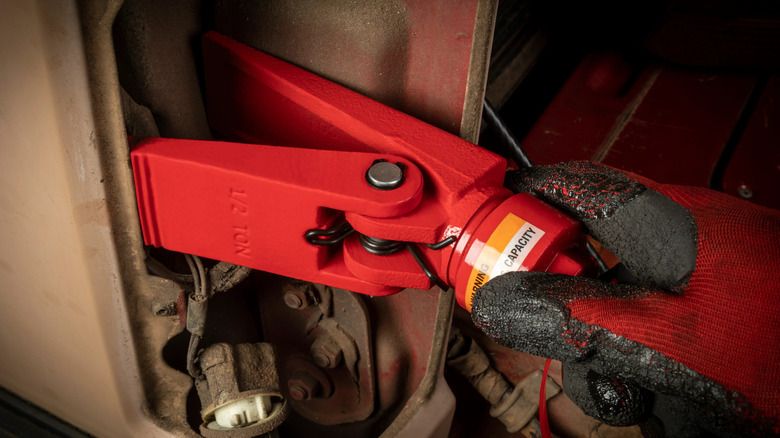What Type Of Tool Is A Porta Power And How Do You Use It?
If brute force had a tool form, it would be the Porta Power. Porta Power is a portable hydraulic ram system with a compact setup that converts hydraulic pressure into mechanical force. You're likely to find them anywhere something bent, twisted, or stuck needs a firm nudge back into place. Think auto body shops, construction sites, heavy equipment, and repair bays. It's also a useful and versatile find if you're looking to set up your own home body repair and paint shop.
Being a hydraulic powerhouse, you can expect a Porta Power to pack tons of pushing, pulling, spreading, and lifting muscle. Fitting all this into a single kit you can carry under one arm elevates it to a compact modular hydraulic tool which, more or less, follows the same principle behind a car's hydraulic jack: pressurized fluid to create amplified force. It's far from a must-have tool, except if you're looking to splurge when building your mechanic tool kit.
The tool consists of three main parts: a pump, a hydraulic hose, and a ram, which is also known as a cylinder. Depending on the job, it may require additional accessories such as spreader jaws, push pads, extension tubes, or V-shaped adapters. Once everything is connected, a few pumps of the handle sends hydraulic fluid through the hose, pushing the piston inside the cylinder with staggering strength. Even a modest 10-ton kit can deliver enough pressure to move a vehicle frame.
How to use a Porta Power the right way
Many manufacturers design their Porta Power as modular kits that come in different cylinder capacities, usually ranging between four, 10, and 20 tons. However, they can't get the job done on their own, which is why they usually require specific separate attachments. For example, a spreader toe attachment can separate panels after a collision, while a push extension helps realign misaligned beams. This is why you start by choosing the right components, since different jobs need different attachments.
Once you've chosen the right attachment, assemble the system by connecting the hose securely between the pump and cylinder. Tighten the couplers, but don't overtighten as they're designed to seal hydraulically, not mechanically. A proper connection between the pump and cylinder is vital as each joint must be tight in order to prevent leaks. You must also vent the pumps before use to release trapped air, since air bubbles make the pump spongy and reduce the force output drastically.
Once connected, pump slowly as each stroke builds hydraulic pressure, causing the ram to extend. Keep an eye on your alignment as pressure increases and the piston moves. Any shift or twist means you need to release pressure and reposition. Over-pressurizing doesn't make the job faster; it risks bursting seals or sending a cylinder flying. To release pressure, turn the release valve counterclockwise. This should cause the ram to retract as hydraulic fluid flows back into the reservoir. Do this gradually, as rapid pressure release can cause sudden movement, and if you're holding or balancing components, that could be a recipe for injury.

